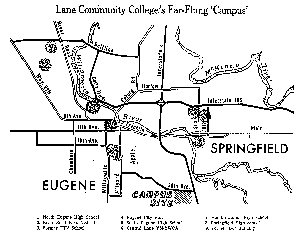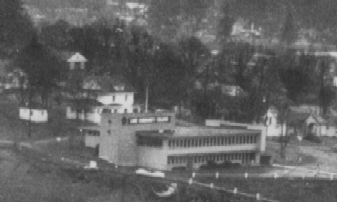Building a Campus
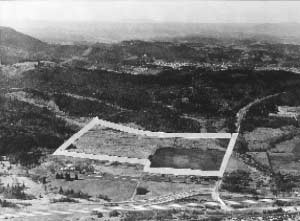
Aerial view of the LCC site on
30th Avenue, 1965
Large image of aerial view
 
William and Eleanor Moore,
first settlers and holders of donation land claims on site that would become LCC, 1853
Photographs from The Torch, January 5, 1967
Moore's Donation Land Claim
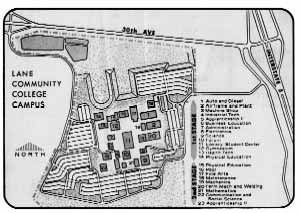
LCC campus on 30th Avenue, Eugene
Eugene Register-Guard, February 19, 1967
Large image of campus plan
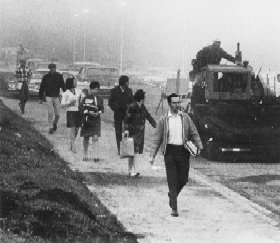
First day of classes on 30th Avenue campus,
September 1968
Courtesy of Eugene Register-Guard
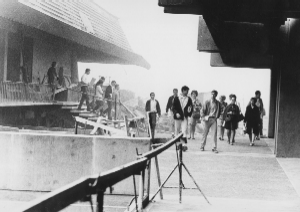
First day of classes on 30th Avenue campus,
September 1968
Courtesy of Eugene Register-Guard
|
Within a few weeks of inviting the public to suggest or offer possible sites for the new college, the board subcommittee on land acquisition had four offers. A fifth possibility emerged early in 1965. Eugene lumberman-industrialist Wilfred Gonyea offered Lane 100 free acres of his property located on the south side of Eugene's 30th Avenue along the west side of Interstate 5. The location had access to primary roads, was geographically central, and the price was right. The college accepted Gonyea's offer on March 17, 1965, and purchased an additional 48.81 acres south and west of the donated land on August 16, 1967.
The land that became Lane Community College was originally settled by William and Eleanor Moore who traveled by ox team from Ohio on the Oregon Trail. They filed donation land claims on 320 acres on the site in 1853. Facing an urgent need to have a campus ready by fall 1968, when leases expired on temporary facilities, the board got planning underway in fall 1965. The Eugene architectural firm of Balzhiser, Seder & Rhodes was hired in September to plan the campus. Trips were arranged to other college campuses to study campus design. Out of the trips came such ideas as mixing the tech-voc and college transfer buildings so that status was not assigned according to location or style of building, locating the Learning Resource Center and student center in the middle of the cluster of buildings because they serve all students, locating administration and business buildings close so they could share computer facilities, locating sports facilities close to the campus entrance and parking, and creating non-structural walls to allow easy remodeling as educational needs change. Board members rejected suggestions that the new campus be built a building at a time, as needed. Members voted to build 11 structures in the first stage, then later increased that to 13. About 100 spectators watched the groundbreaking ceremony in chilly, overcast 40-degree weather on January 6, 1967. U.S. Senator Wayne Morse, officials representing state and local education, W.H. Gonyea, donor of part of the campus acreage, the great-great-granddaughter of William and Eleanor Moore who first settled the land in 1853, and others attended the groundbreaking. In the next eight months, the board members awarded contracts for construction of 13 buildings. Only the Forum and Center Buildings were not ready for occupancy when classes began on the new campus in September 1968.
By July 1968 the move to the new campus had begun. When students arrived in September, they had to contend with workers putting the finishing touches on most buildings, and later with sawdust paths through mud where sidewalks had yet to be poured. But, the mood was upbeat as they moved among the first 13 buildings costing $16.3 million.

Aerial view of LCC 30th Avenue campus,
November 1968.
Photograph courtesy of Skyview Aerial Surveys, Inc.
Large image of aerial view
|


